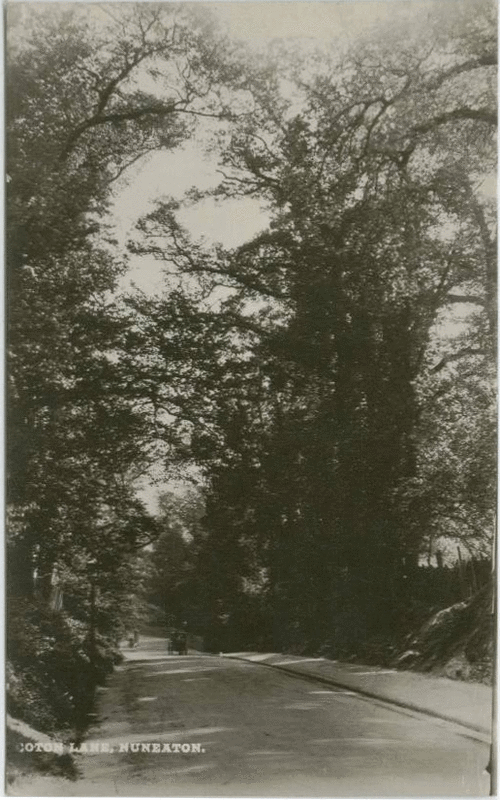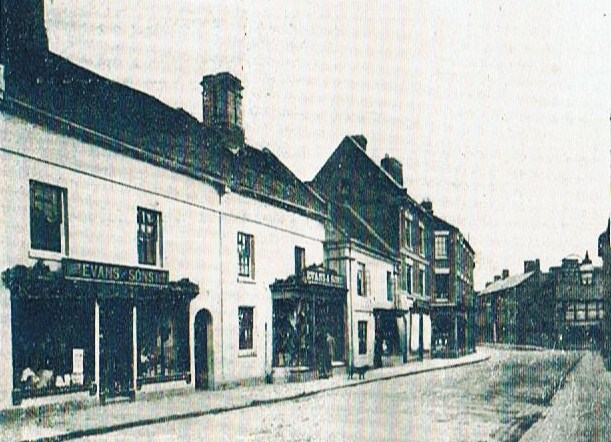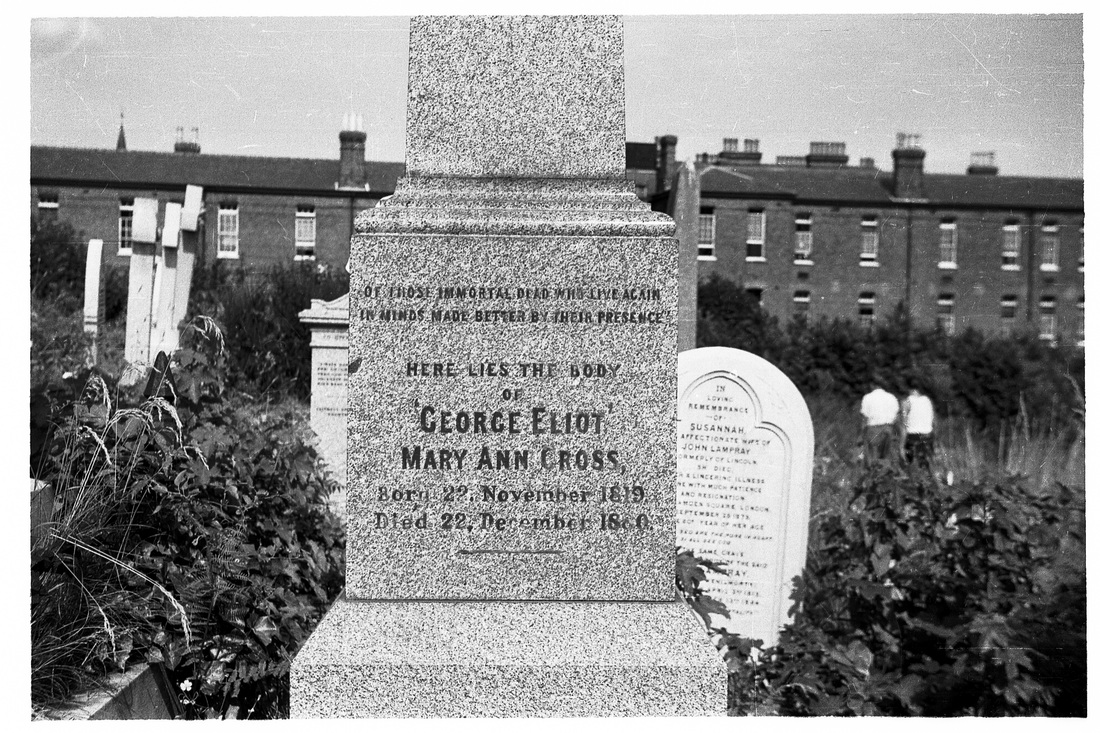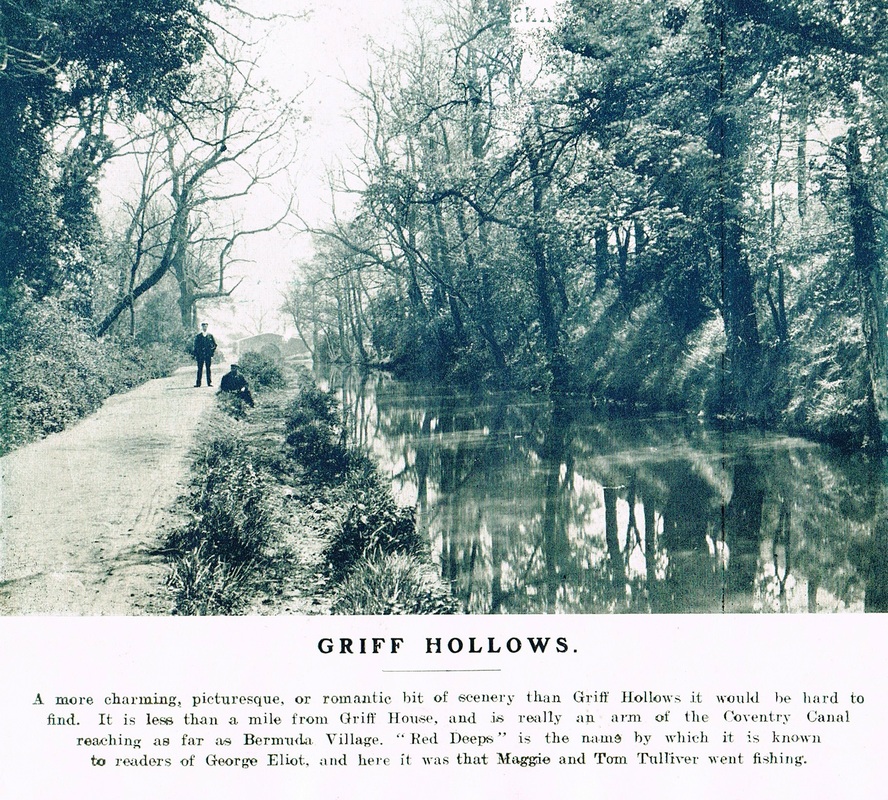This section is devoted to George Eliot in her early home and the influences on her work. Outside the mainstream of the published biographical literature of her life. Many thanks to Bob Muscutt who is breaking new ground on Mary Ann Evans (George Eliot) 1819-1880. She was born at South Farm on the Arbury estate, then after a few months her father Robert Evans and mother Christiana (Pearson) moved to Griff House where the family lived until 1841. Robert Evans retired and he moved with Mary Ann to Foleshill. Miss Evans moved to London after the death of her father in 1849. We will also look at the family history of the Evans and Pearson family, Miss Evans relatives in the local area, the town of Nuneaton and the parish of Chilvers Coton during the period Miss Evans lived there. We will also identify the characters in her novels based on local events and the sources of the information leading to the identification of these characters.
| Robert Evans (father of George Eliot) and his will by Bob Muscutt | |
| File Size: | 4 kb |
| File Type: | docx |
George Eliot & Weimar By Bob Muscutt
| George Eliot in Weimar and Berlin | |
| File Size: | 15516 kb |
| File Type: | rtf |
George Eliot in Nuneaton & Chilvers Coton By Bob Muscutt
| George Eliot - The Griff Years | |
| File Size: | 6 kb |
| File Type: | docx |
| What did George Eliot know about Mary Ball | |
| File Size: | 27 kb |
| File Type: | doc |
| George Eliot and Mary Ball | |
| File Size: | 31 kb |
| File Type: | doc |
| George Eliot and Nuneaton by Peter Lee | |
| File Size: | 46 kb |
| File Type: | doc |
George Eliot and Conservatism by Bob Muscutt
| george_eliot_and_conservatism_introduction.docx | |
| File Size: | 18 kb |
| File Type: | docx |
| George Eliot and Conservatism - Part One | |
| File Size: | 46 kb |
| File Type: | rtf |
| George Eliot and Conservatism - Part Two | |
| File Size: | 25 kb |
| File Type: | docx |

Chilvers Coton village and church (All Saints) were called Shepperton in "Scenes of Clerical Life". George Eliot's first published stories in Blackwood's Magazine. "Scenes" was a set of three novellas depicting life in the parishes of Nuneaton and Chilvers Coton in the period George Eliot (Mary Ann Evans (1819-1880) knew it. Her father - Robert Evans -was the estate agent for the Newdigate family on the Arbury estate, and he also managed estate affairs for other landed families. Miss Evans draws on the characters she knew at the time in populating "Scenes". People who lived locally knew who she was writing about when "Scenes" was first circulated in 1857 and put names to the fictional characters. Also featured in this view is the old vicarage. Demolished from memory about 1936 due to its distressed state of disrepair. Miss Evans was baptised in Chilvers Coton church. Today only the tower part of this church and parts of the walls remain as the church was almost destroyed by the Luftwaffe in May 1941. It was rebuilt after WW2 with the aid of German PoW's awaiting return home. The church could not be rebuilt in exactly the same pattern due to its failure to comply with modern building regulations. It has been very sympathetically re-designed. The reconstruction marks an act of reconciliation between two warring countries, the Germans who destroyed it and their citizens who carried out the building work afterwards. Although this scene has changed the changes are in keeping with the setting. But it is a pity that this part of George Eliot's parish with so many connections to the author is not exactly as it was. (Geoff Edmands collection)

This is the road which used to connect the parish of Chilvers Coton and Attleborough. A roadway Miss Evans must have travelled many times as she went from her home at Griff through Coton to school at Attleborough in the period 1824-1828 when she was at Miss Lathom's school there. It would have been very familiar to her. Nowadays it has been widened and is unrecognisable as Avenue Road, Nuneaton. The section here crossed the Wem Brook which was the former parish boundary between the hamlet of Attleborough which was, in Miss Evans days, part of Nuneaton parish and Chilvers Coton. Attleborough became a parish in its own right in 1842 when a new church was built on land formerly occupied by the estate of Attleborough Hall. Miss Evans kept in contact with her sister Christiana who lived at Attleborough in the 1850's and in visiting her there must have been familiar with the same road. But the pace of change was so slow in the 19th century that this aspect would have changed little. (Geoff Edmands collection)

Kem's farm at Attleborough and the legend of Teddy Kem (Edward Kem 1722-1800) may have inspired George Eliot in later years to write "Silas Marner". She wrote to the effect that when considering the novel in her mind's eye she could remember a legendry solitary linen weaver, and this fits exactly with Teddy Kem as in addition to keeping a few animals on his farm he was a solitary linen weaver. Miss Evans was at school at Attleborough between 1824 and 1828 so it possible to imagine that this lonely, legendary character, whose strange lifestyle, solitary habits, rustic appearance was well known to old Attleborough folk at the time. In fact the character was so bizarre that local people wrote about him through the whole of the 19th century. So one can imagine Miss Evans at the age of five in the little boarding school at Griff with her sister Christiana listening to the old folk describing Teddy Kem and talking about his ways, and this story remaining with her for thirty years afterwards. George Eliot admits to cleaning the story up a bit for the characterisation of Silas Marner. If this was the case, and we do not now have proof beyond doubt, (although the setting she uses and parts of the story provide strong circumstantial evidence) then the village of Attleborough is Raveloe. George Eliot fans visiting the district can still see the legend celebrated in the name "Kem Street" in one of Attleborough's village streets.The farm has gone. It was pulled down in the 1960's. Much of its land had been taken up by the Sterling Metals factory in Marston Lane, which they purchased in 1939. The farm remained as a small holding for some years afterwards. (Alan Cook collection)

The school in the background is the Elms where George Eliot went as a child to be privately educated after she left Miss Lathom's at Attleborough in 1828. She was there between 1828-1832. Her class mates were generally the better off kids from the district. The Elms was demolished by the local authority for road widening in 1960.

This aerial view shows old Vicarage Street looping around the very top side of the picture and the Elms is visible at the top right of the picture overlooking the National schools. Nuneaton church and vicarage in the centre of the photo. Nuneaton grammar school in the bottom of the photo was not built until the 1870's so would not have been known to Miss Evans. The roadway where the Grammar school is located now King Edward Road was formerly called Peacock Lane when Miss Evans knew it. The house standing isolated bottom right was built by William Cawthorne the well known Nuneaton stationer and printer. The aerial view probably dates back to a sorte' in 1925.

The shop owned by Samuel Evans, a relative of George Eliot in Abbey Street. Formerly the premises of J.H.Clay to whom she was related on the maternal side. The projecting white building next door was Yoxall's the baker and confectioner. This view is dated about 1890. After Mary Ann Evans died in 1880 curious tourists arrived in Nuneaton looking for her local connections and were shown this shop and on enquiring further were told who the characters were by the locals. The heads of the tale were well known to elderly Nuneaton who had heard their parents talk of it, or even seen it themselves played out before their eyes.

Although you won't see as many books on the shelves relating to George Eliot as in the photo, they are being kept securely behind the scenes for posterity and can be made available on request. All items can be searched for on the on-line catalogue or via the card indexes in the library.
If possible a link to the library web pages would also be useful Nuneaton Library's George Eliot Collection http://www.warwickshire.gov.uk/georgeeliot


















